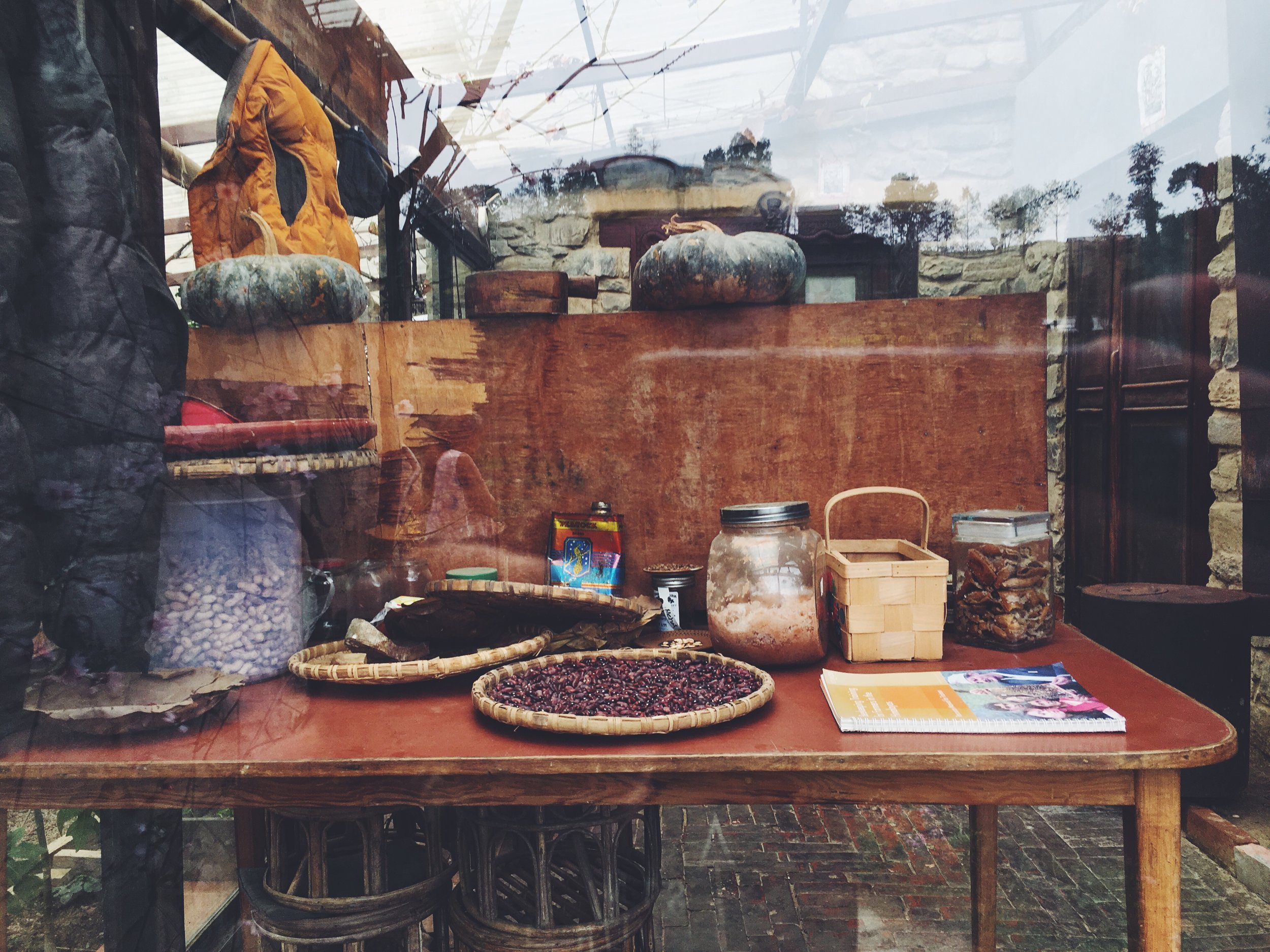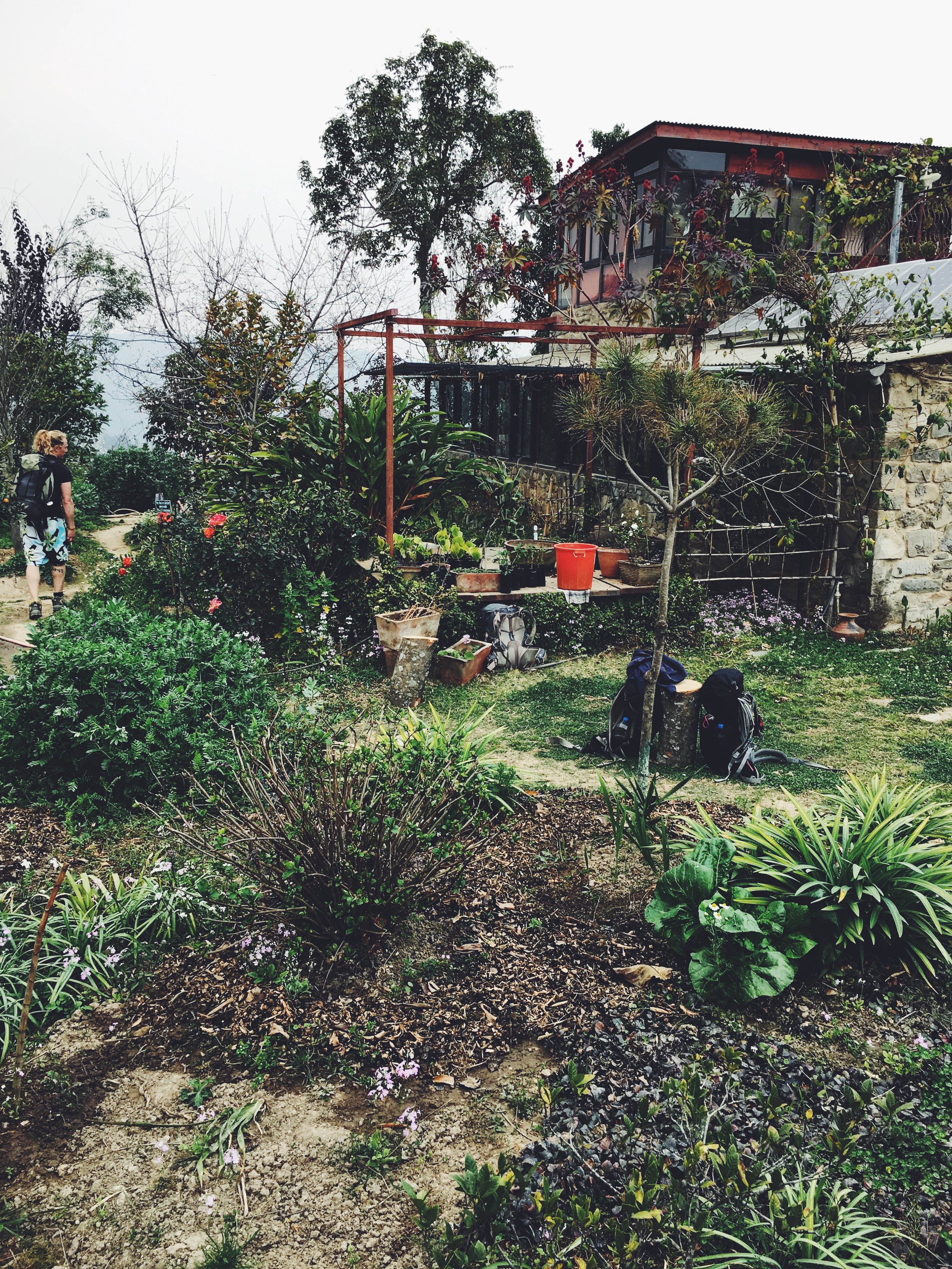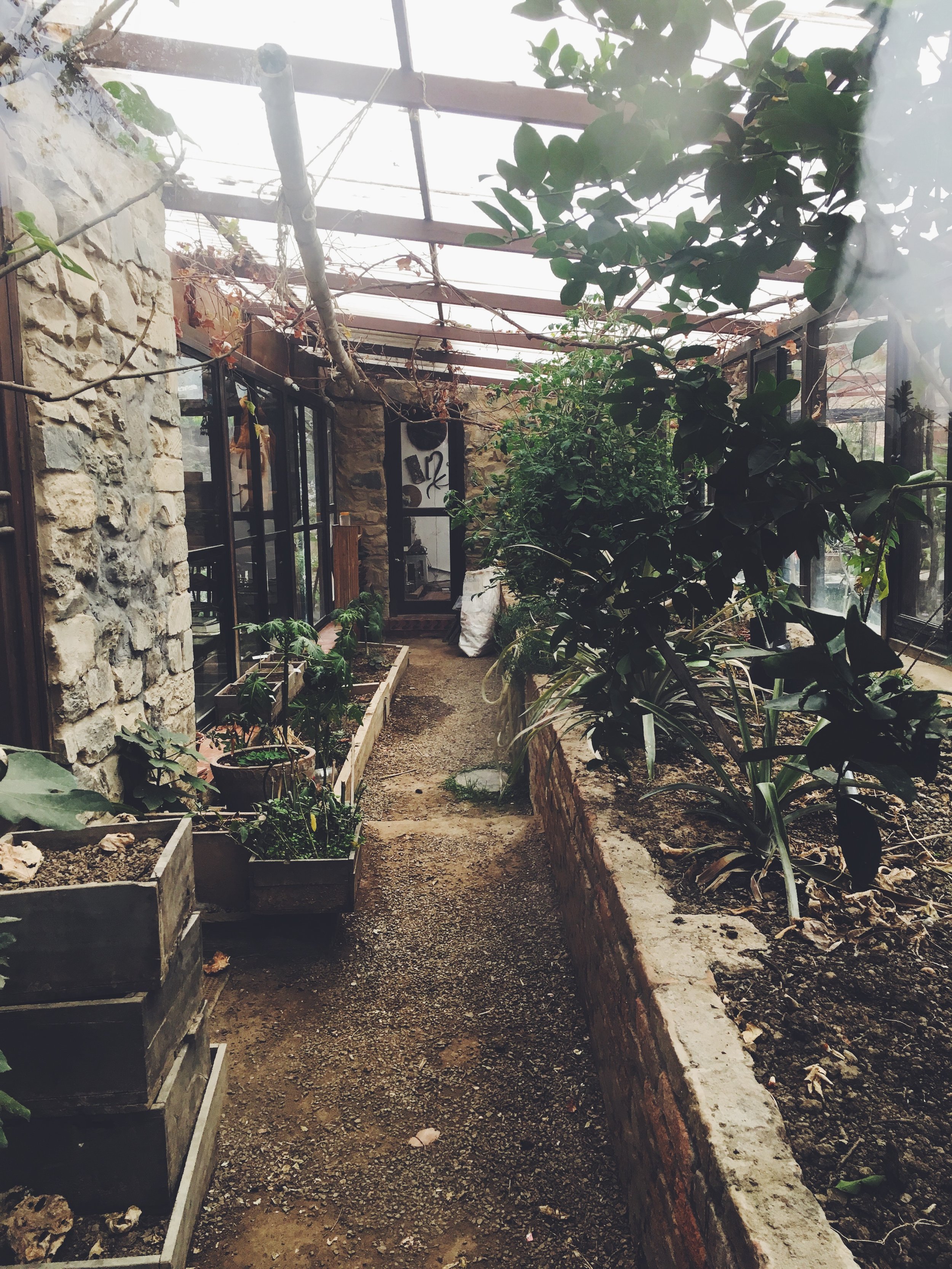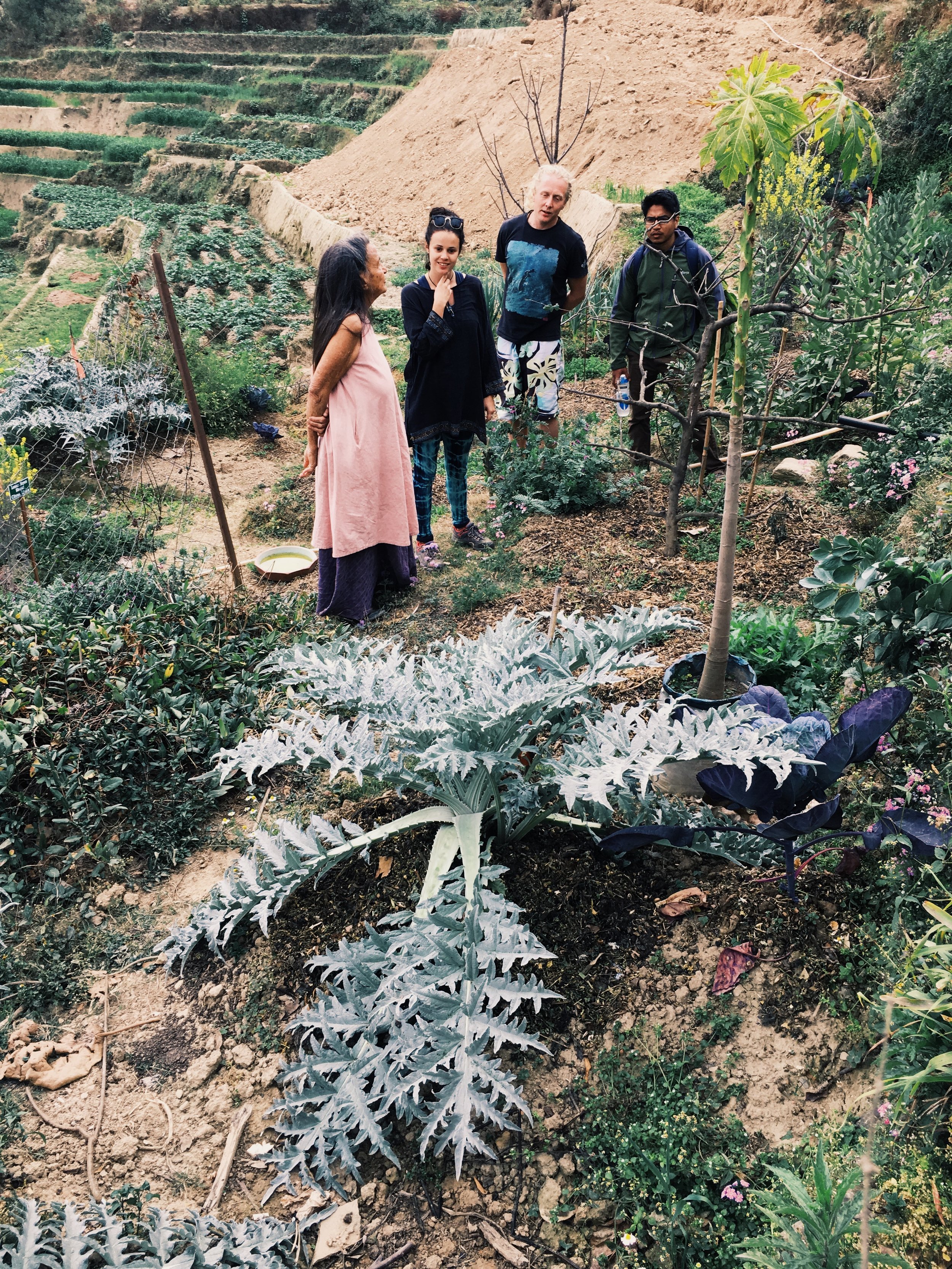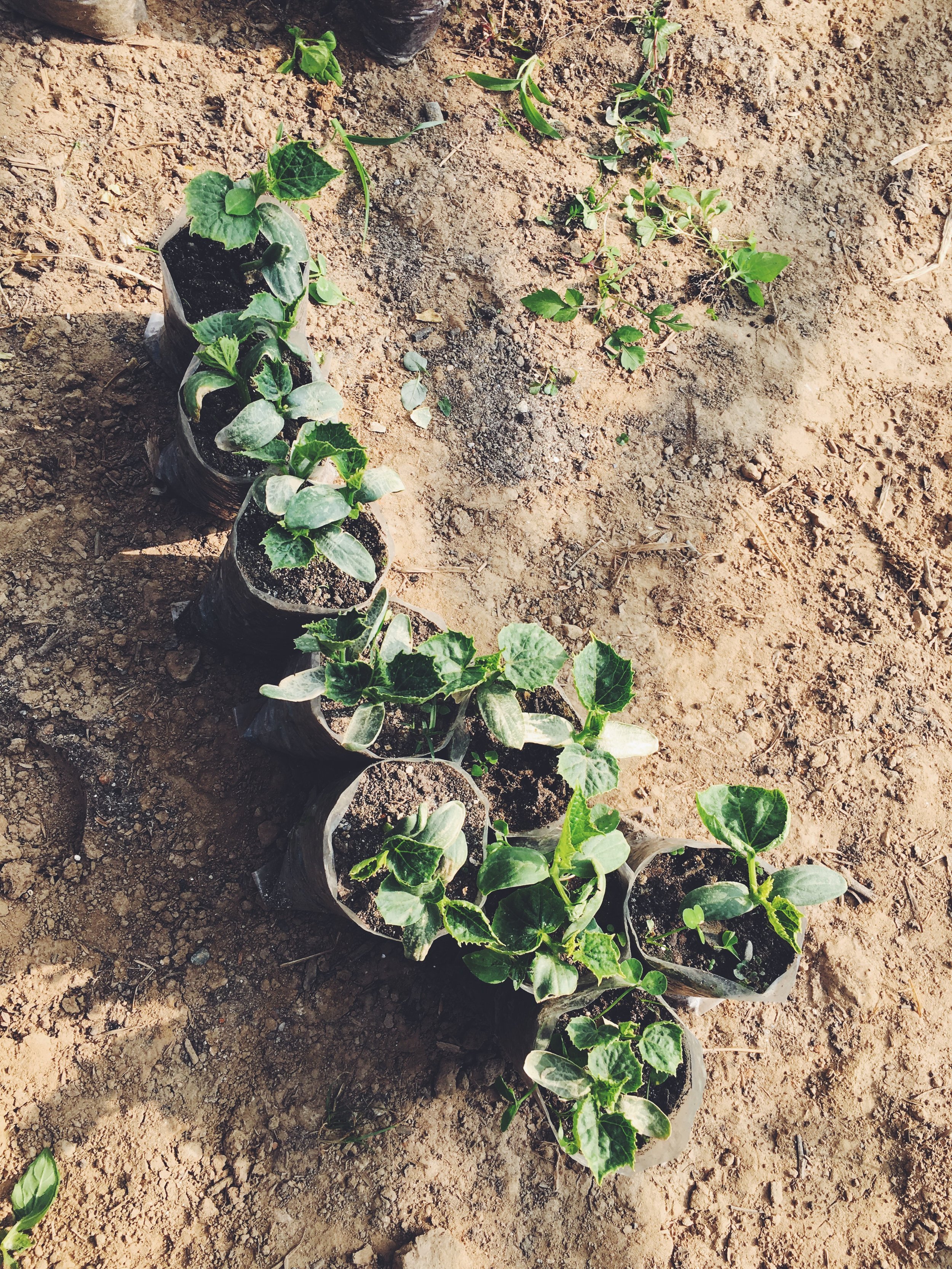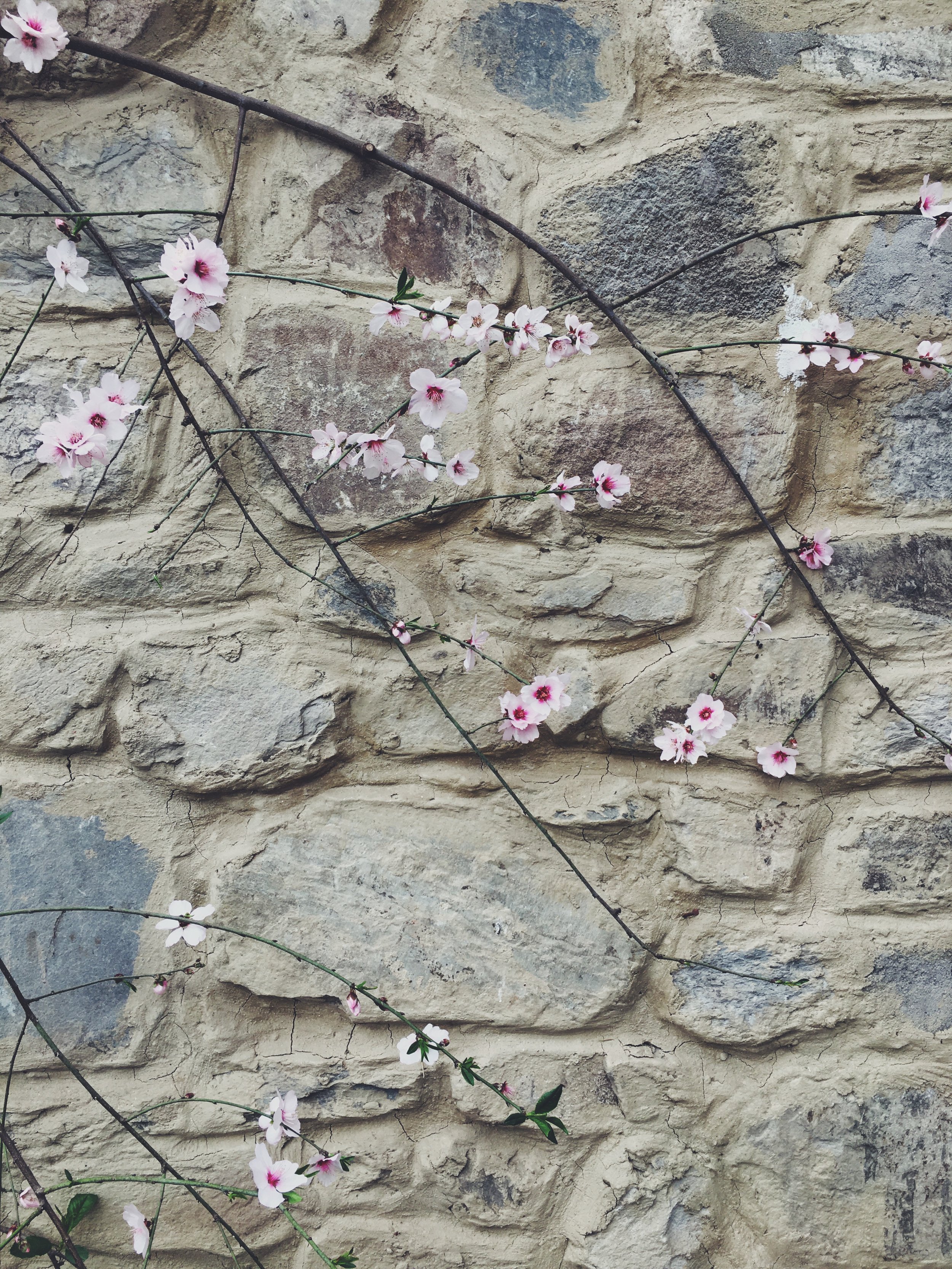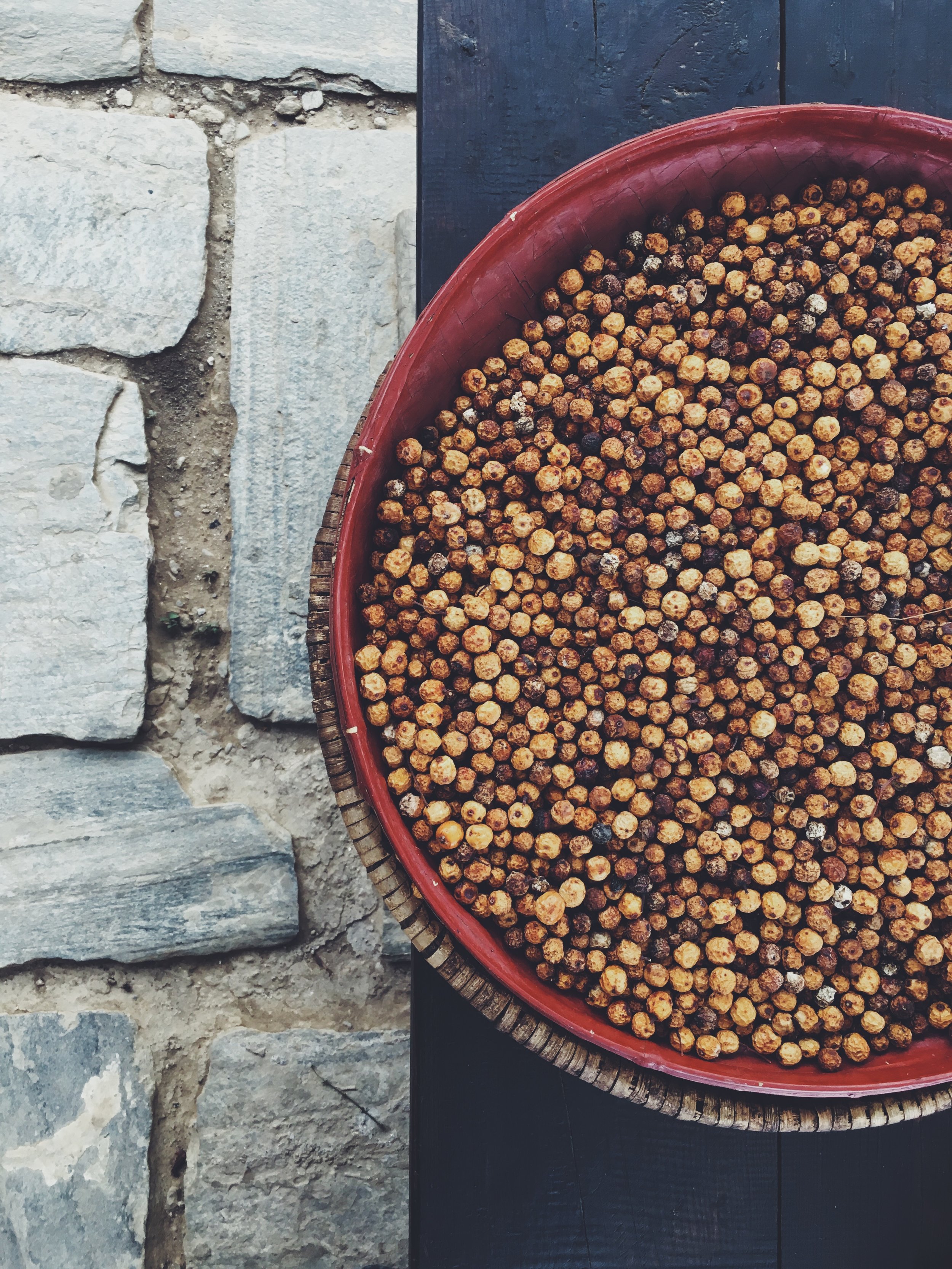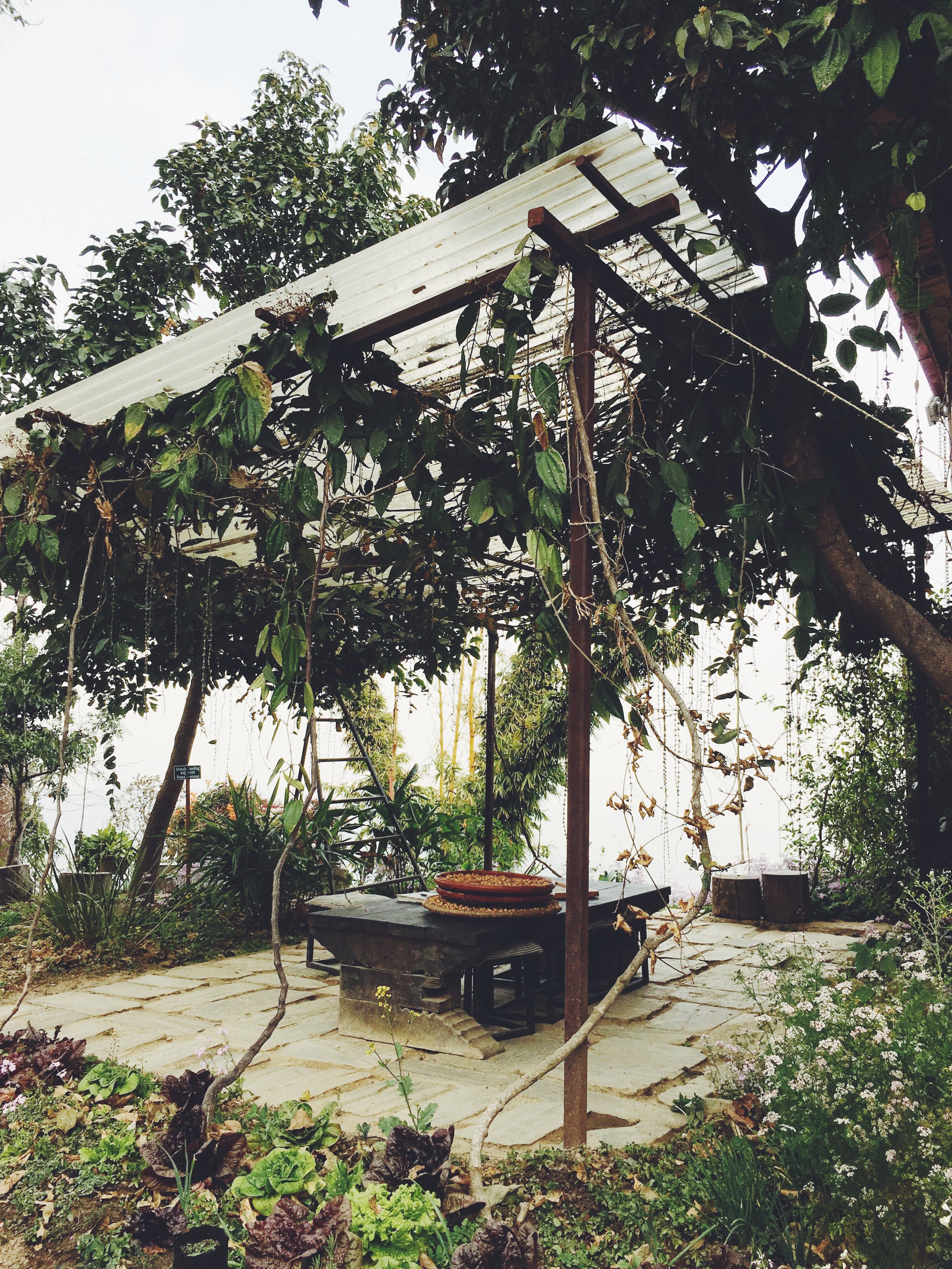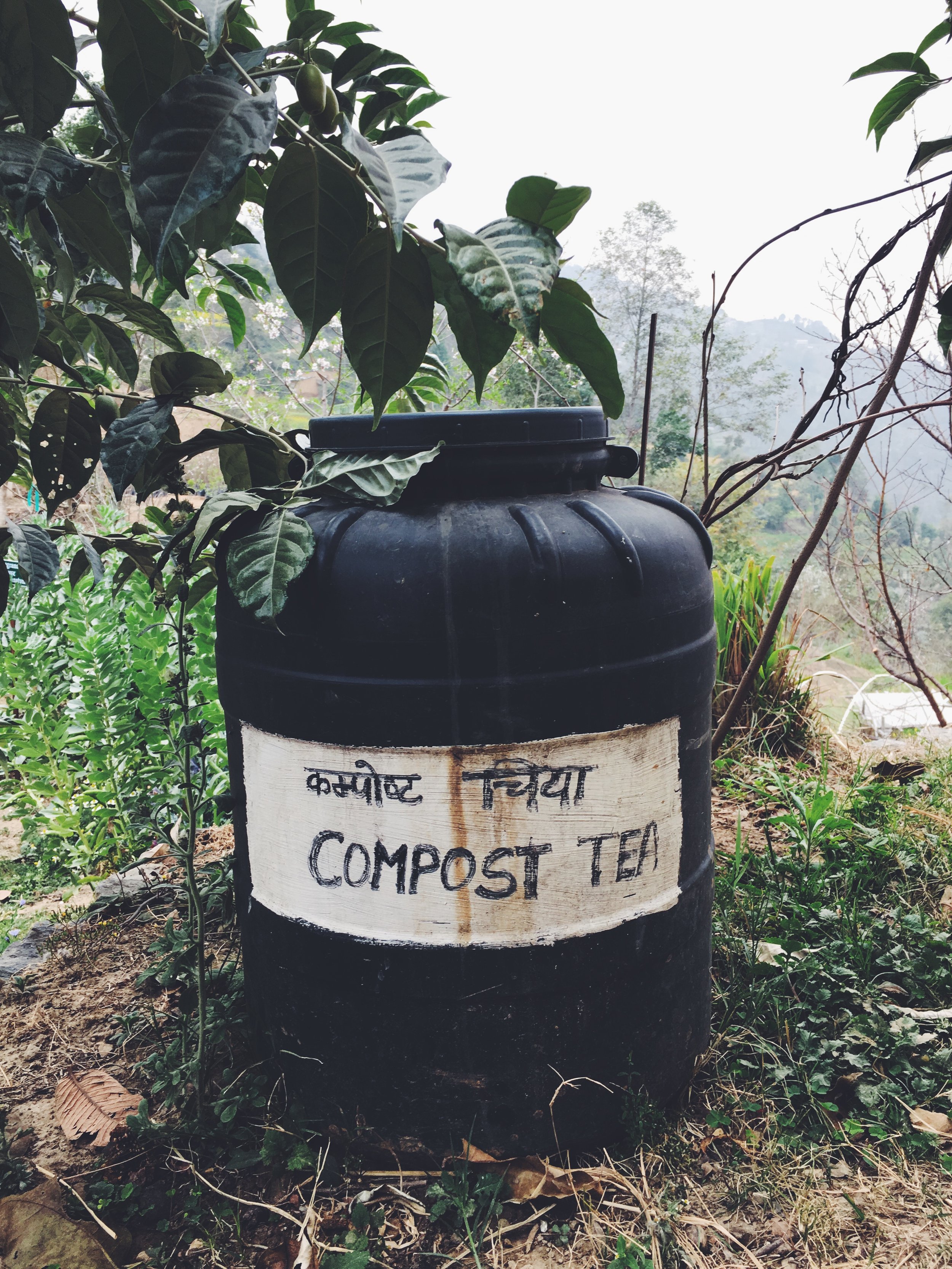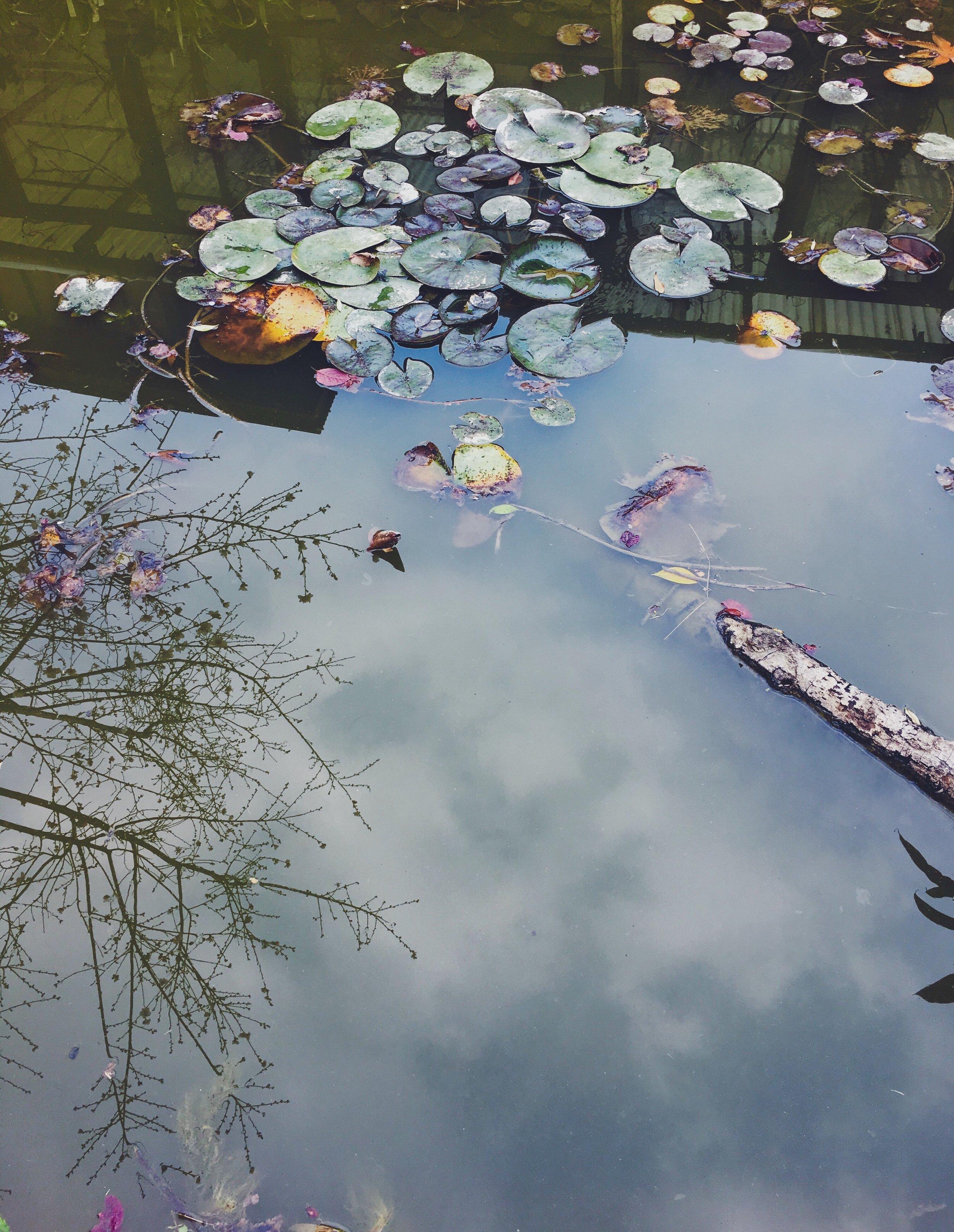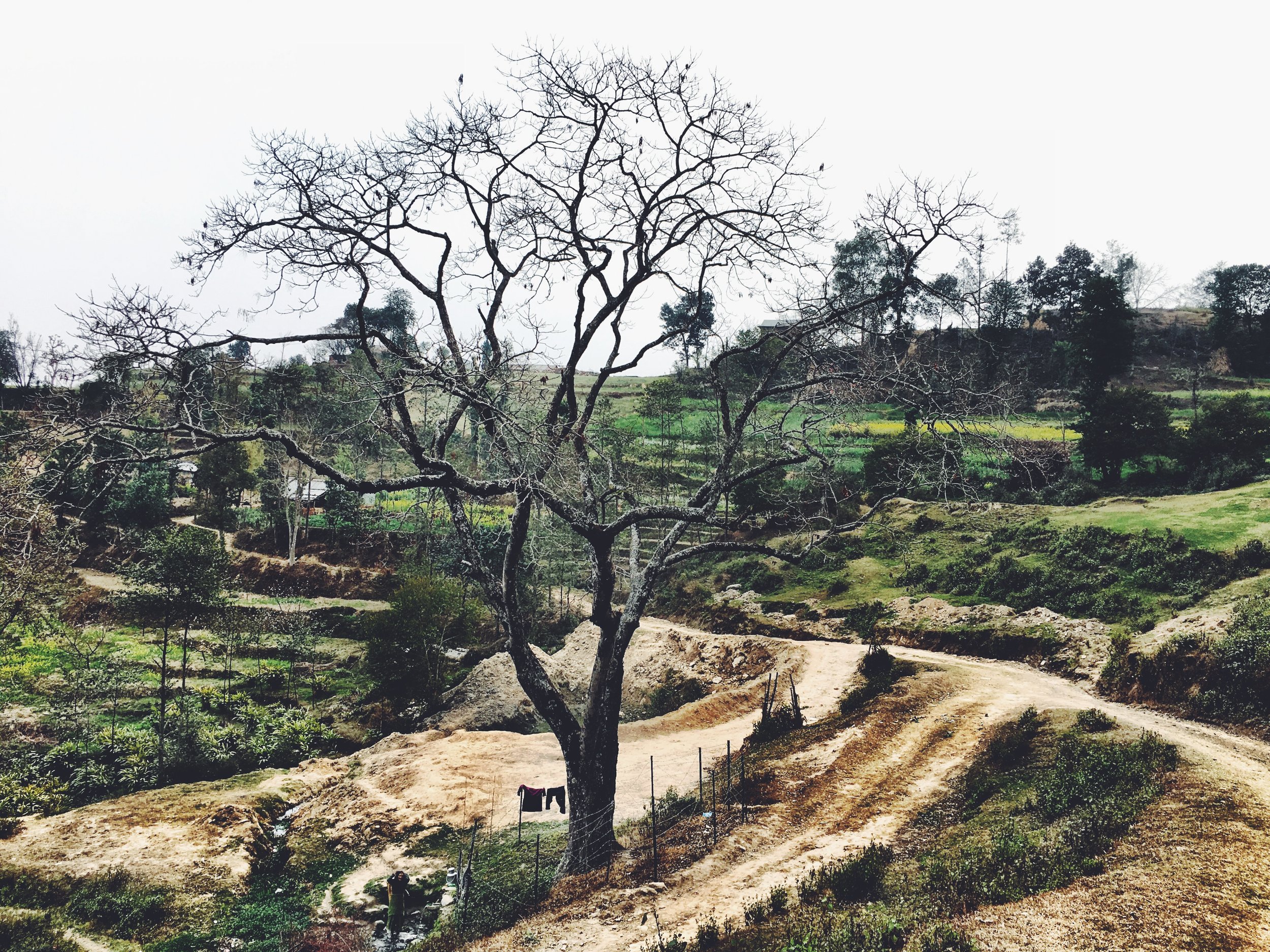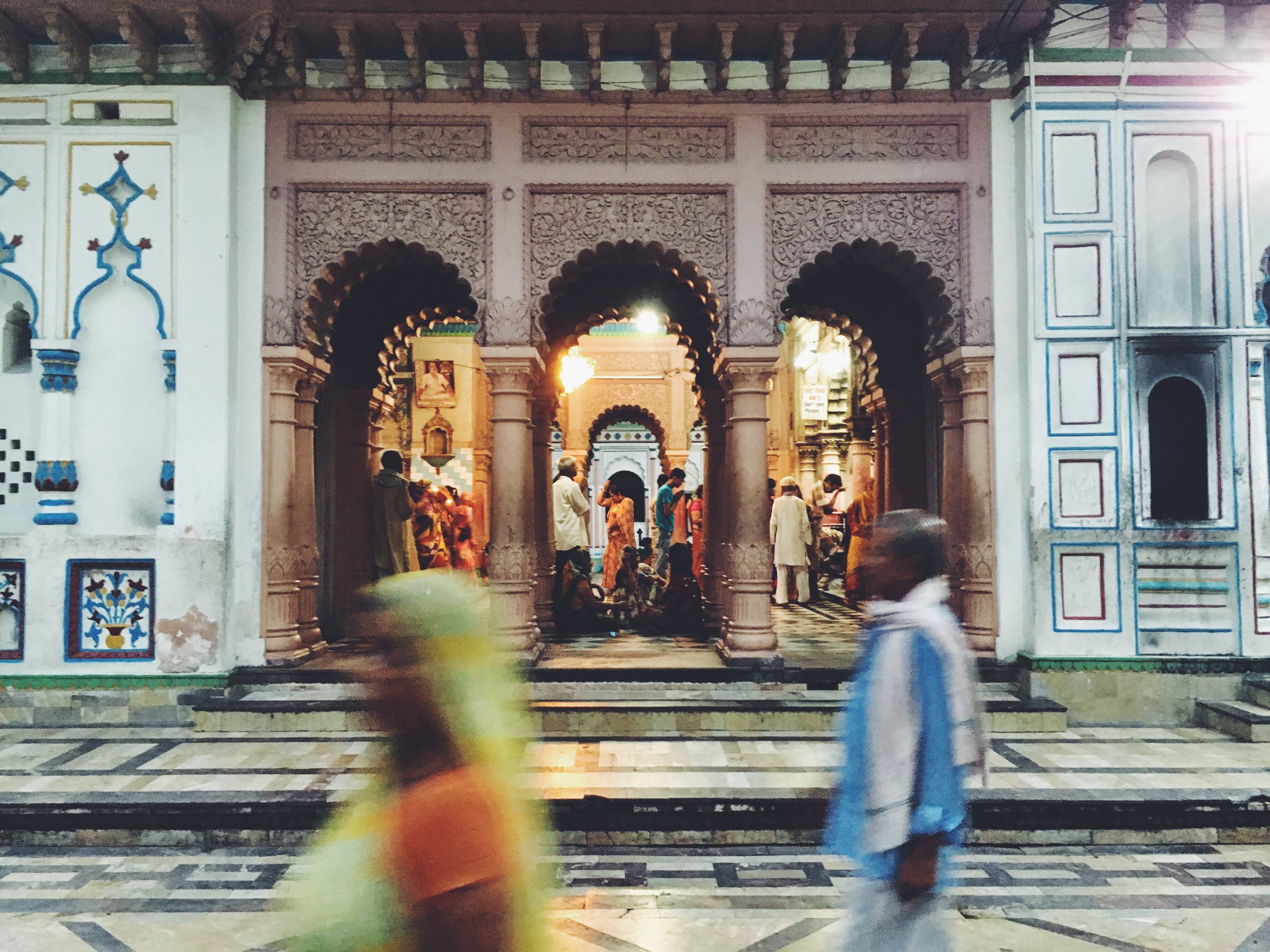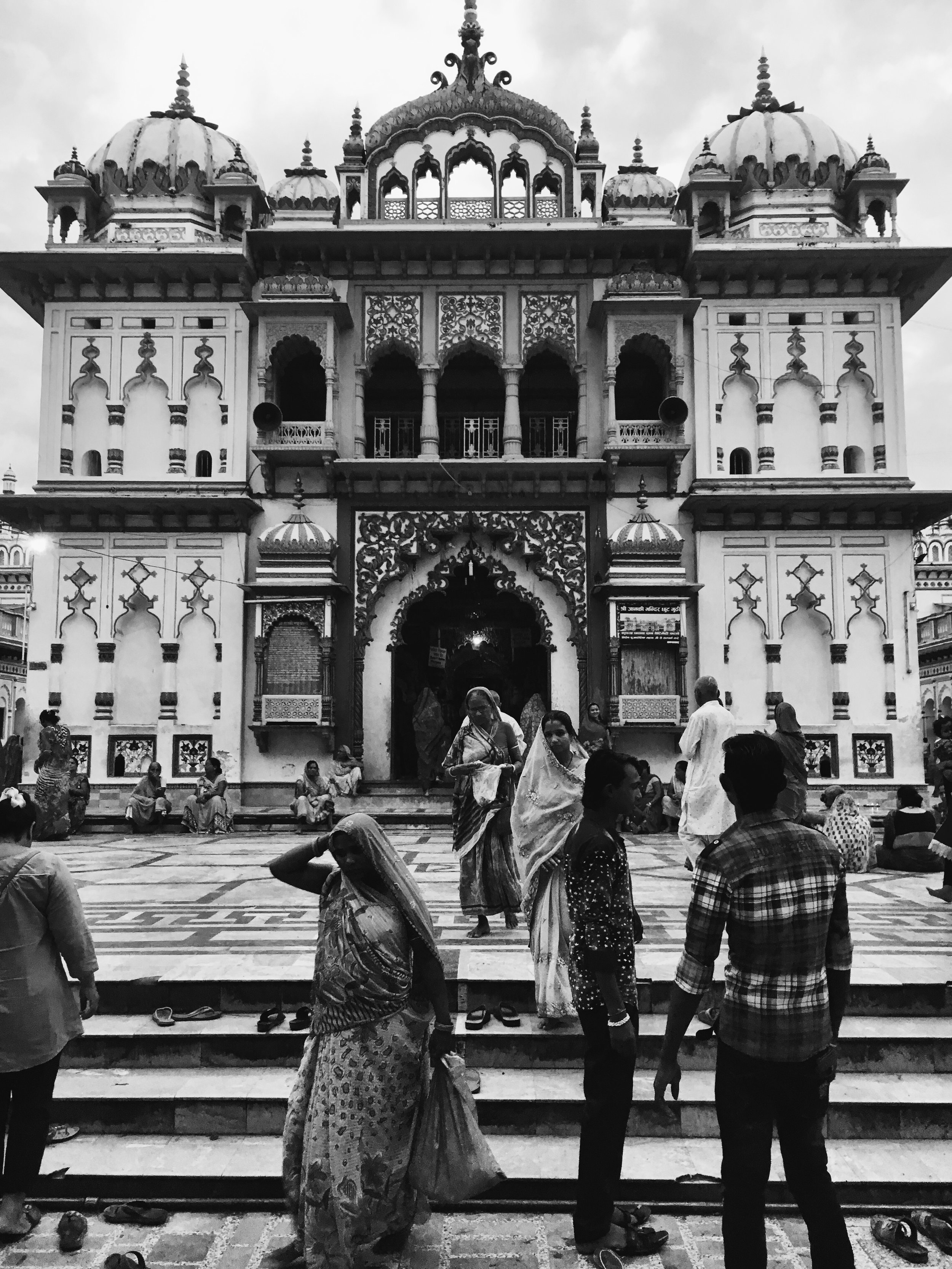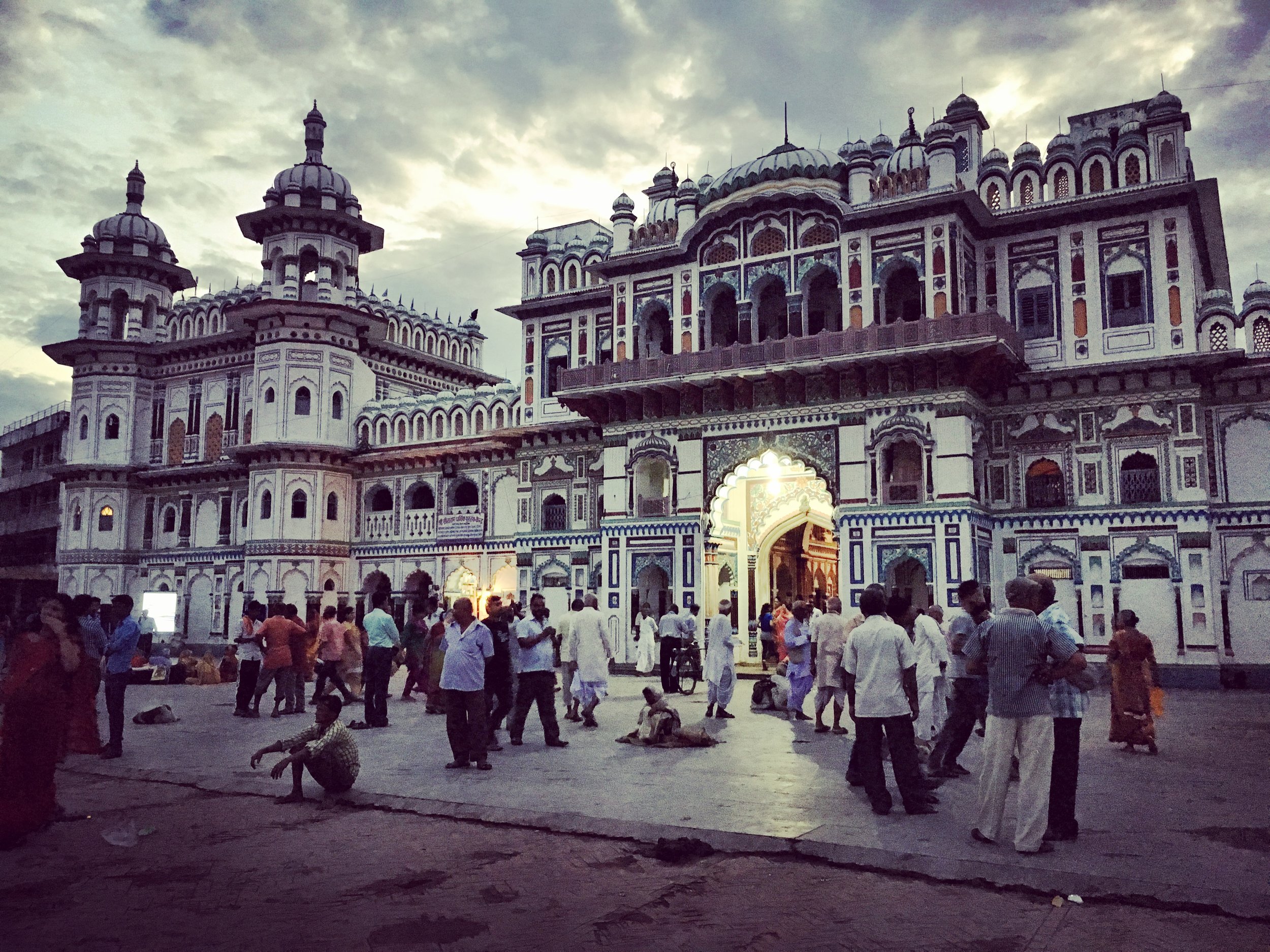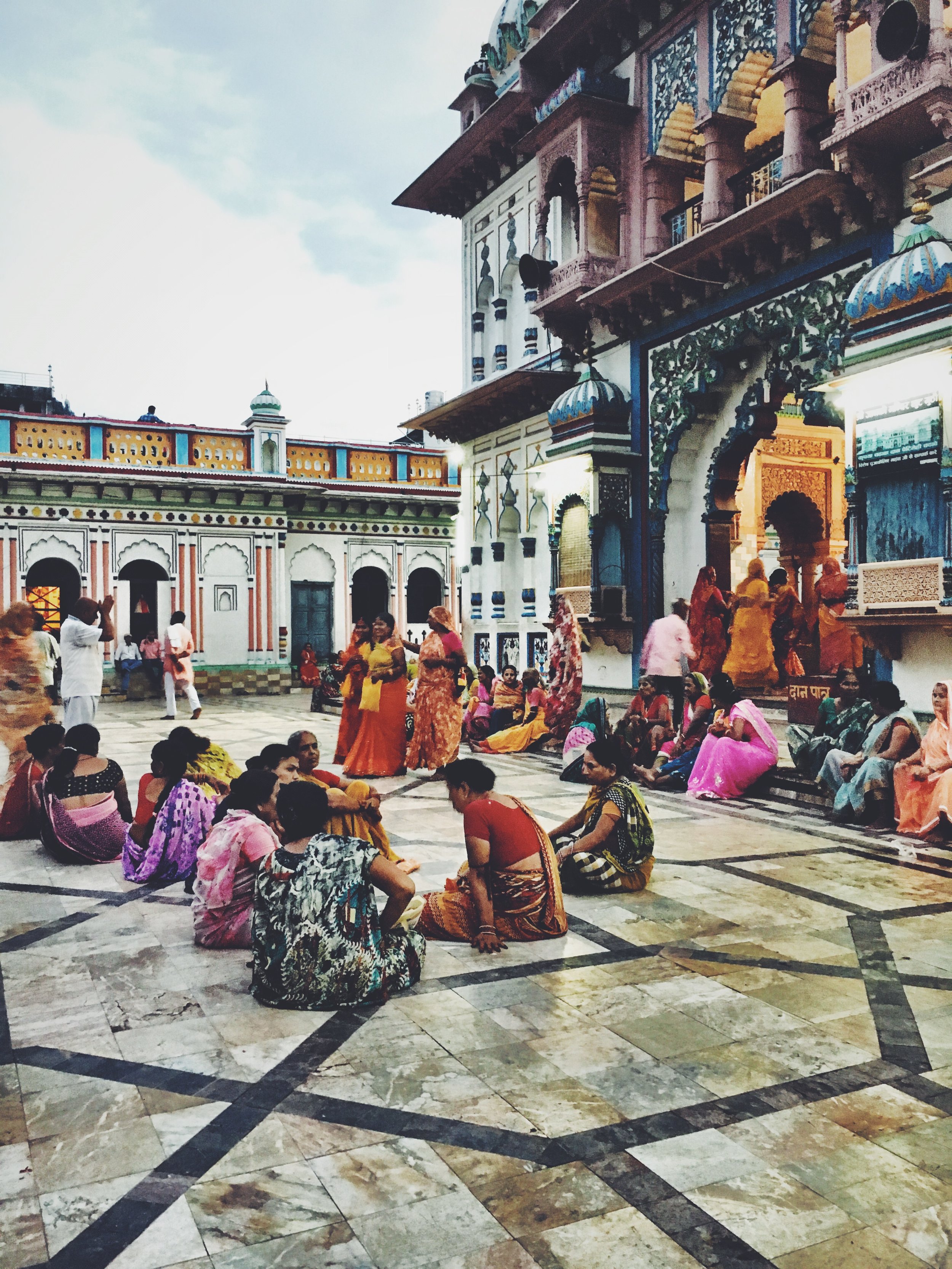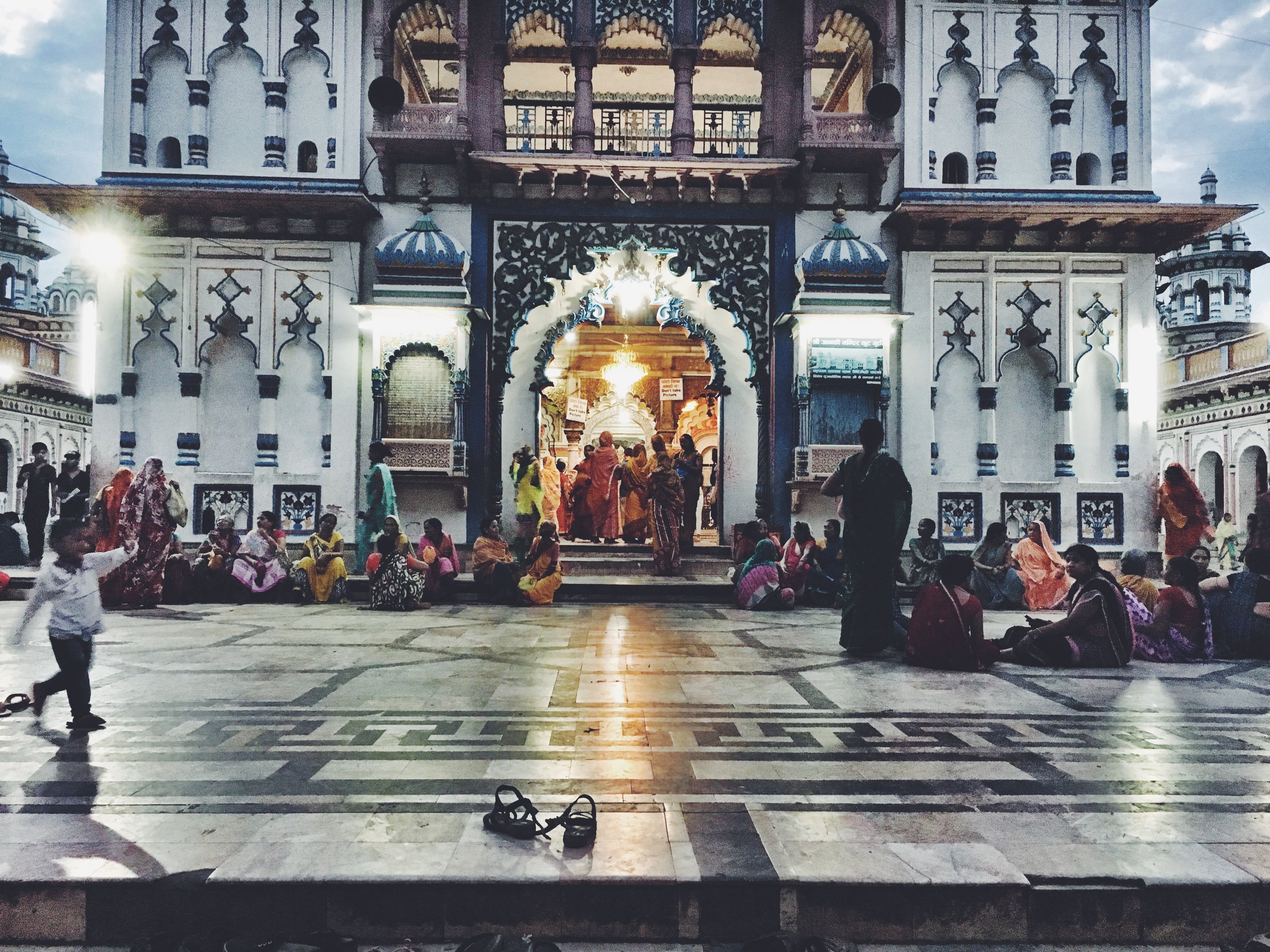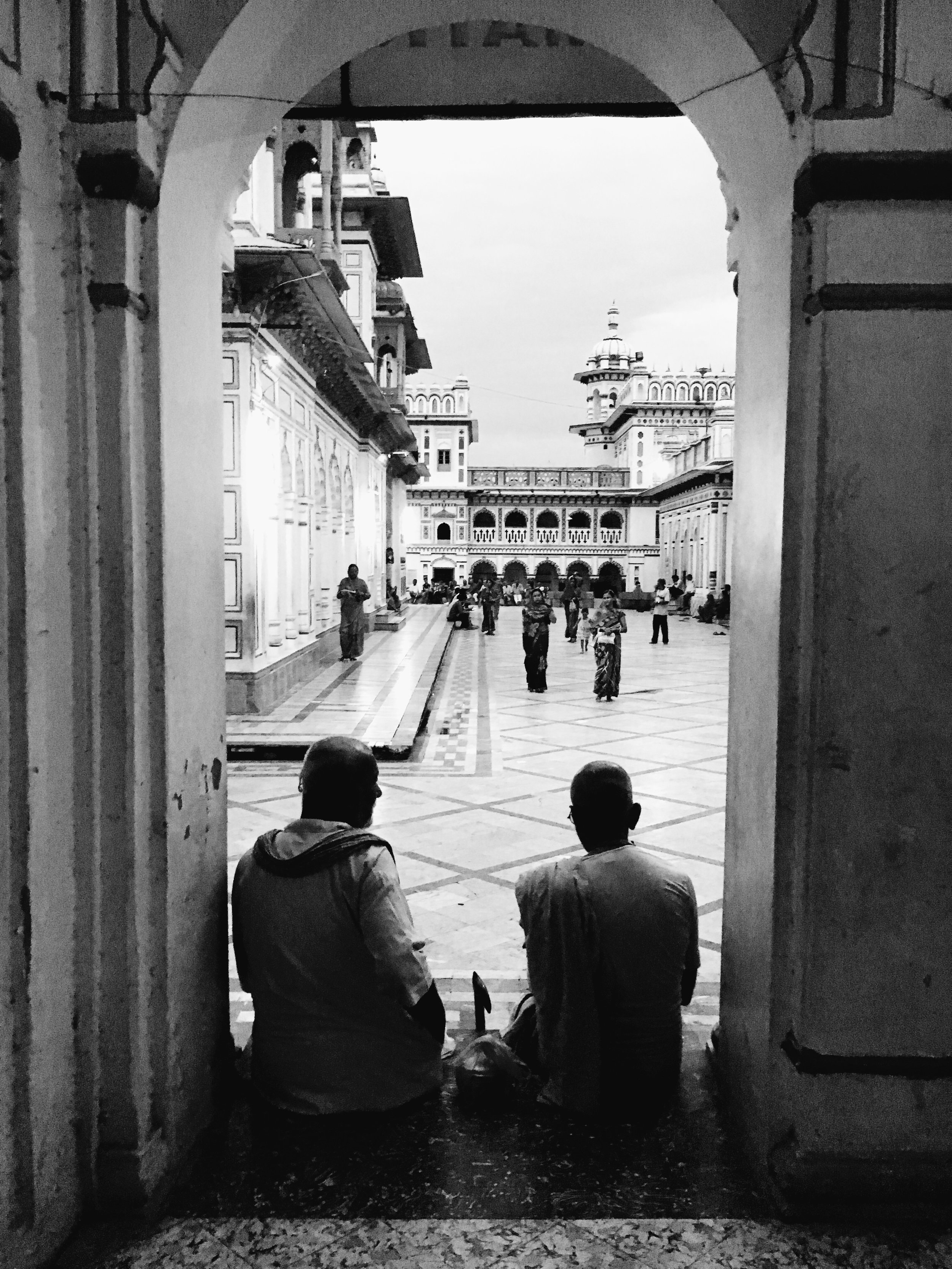After watching the Shiva ceremony at Pashupati, we return to our rooftop in Sanepa, and gaze out on all the fires lit up across the city, their golden fumes illuminating the dusty, concrete backdrop. Eventually, we will all burn in the fire, but not us, not here, not now. We have more seeds to plant, entering a new cycle of creation. Burning up the old patterns, creating space for other constellations, watching growth out of decay - whether its in a Kathmandu vegetable patch, or in the garden of the mind.
Biointensive Organic Farming in Patalekhet Village
Photos and text: Caroline Hargreaves
"The biodiversity crisis, which presents us with dangers as profound and costly as climate change does, demands the creation of an equal and corresponding political will to act. The environment is the economy. No problem – not poverty, not climate changes, not the economic downturn – can be addressed without simultaneously restoring the systems that are life itself. We must look to what is left of our planet. In rewilding, we have dreamed up the ways and means to keep it alive. Now, we must only connect." - Caroline James
This is Judith. Judith is a systems-restorer. Wise. Wild. A seeder and grower of tree. Of light.
In this series of deep green initiatives in Nepal, we continue our journey to 'Everyday Organic', a green haven supplying and growing vegetables, trees, and herbs near Patalekhet village in Kavre district. From 1987 to 1994, the American couple Jim and Judith lived in Gamcha village near Thimi, promoting local ceramics and experimenting with organic farming between California and Kathmandu.
Today's nursery 'Everything Organic', was established in 2010, and aims to reinvigorate the wealth and health of traditional Nepali rural life and promoting this lifestyle to young nepalis by combining ancient practices with new approaches and techniques for organic farming. Nepal, which is still suffering after the earthquakes of 2015, has a vast potential for the production of organic produce. Sadly, decades of pesticides and chemical fertilizers have polluted the soil. The effect has now been directly linked to disease and poor health conditions amongst farming working directly with the substances in the surrounding areas.
Judith's farm demonstrates and teaches biointensive organic farming, which produces particularly large and healthy yields. In seven years, Oma has trained over 200 local farmers, mostly women, and over 50 of them have since adopted the organic practices. Her colleagues Binod and Shyam are spreading the knowledge across the country. Through their work, they are reconnecting with the soil, so that the dependent and destructive habits of chemical fertilizers can be eliminated and the production increased.
Working and cooperating with the local communities on marketing, trading of saplings and produce also inspires a new form of economic collaboration which strengthens and decentralises the local units. The trade of seedlings, food and wisdom between geographical communities is already part of the new economy of Nepal. Is it part of yours?
The farm has also experimented extensively with composting, water irrigation and pest control, and believes in sharing their findings with environmental activists around the world. In the following sheets, you can learn about:
Ramayana // Janaki Mandir
Coincidentally find myself in the heart of Janakpur, at the steps of the marble temple 'Ram Janaki Mandir' (Nepali: जानकी मन्दिर), dedicated to the Hindu goddess Sita, Rams wife and the heroine of Ramayana. It is the primary temple of the Maithali native indigenous.
Tomorrow is the night of the new moon, and the female creative energy is building.. Women gather outside Sita's temple at dusk. The relationship between Rama and Sita symbolizes two entities coming together to form a whole - which also coincides with the celestial union of the sun and the moon coming together in the sky.. Sita is said to have been born out of the womb of the earth itself, and is known in Hindu mythology for her dedication, self-sacrifice, courage and purity.
A steady stream of pilgrims flow in through the gatehouse to worship the goddess in the inner sanctum... Sita ram ram ram, sita ram ram ram..
The White Tara
The art below is a traditional Nepali 'thangka', a Tibetan Buddhist scroll painting, often with Buddhas or mandalas. THANG KA is a Tibetan word meaning ‘recorded message’.
This piece is dedicated to the Goddess Tara - an archetype of our own inner wisdom. She guides and protects us as we navigate the depths of our unconscious minds, helping us to transform consciousness, our own personal journeys of freedom. Reminding us of our ‘oneness’ with all of creation and the importance of nurturing the spirit within.
Traditionally, Tibetan monks and lamas used the thangkas to instruct the Buddhist Dharma teachings to the nomadic population. As they are scroll paintings, they were easily transported and unrolled, for example in a village far from the monastery. The villagers would gather in the main square around the lama, who would point (with a stick) at the different parts of the thangka and to illustrate his stories.
Adopted by Buddhism, Tara become the most widely revered deity in the Tibetan pantheon. In Buddhist tradition, Tara is actually much greater than a Goddess — She is a female Buddha, an enlightened one was has attained the highest wisdom, capability and compassion. One who can take human form and who remains in oneness with the every living thing. In the legends of Tibet where the worship of the Goddess Tara is still practiced in the Buddhist tradition, it is told that the Goddess Tara is the feminine counterpart of the Avalokitesvara, the Bodhisattva who is reincarnated as the Dalai Lama.
Tara’s themes are Universal Unity, peace, cooperation, destiny, energy and spirituality. In Hindu mythology, Tara is a star Goddess who encompasses all time and the spark of life. She extends this energy to us, fulfilling our spiritual hunger. In so doing, Tara strengthens our understanding of the Universe and its mysteries and gives us a glimpse of our destiny.

